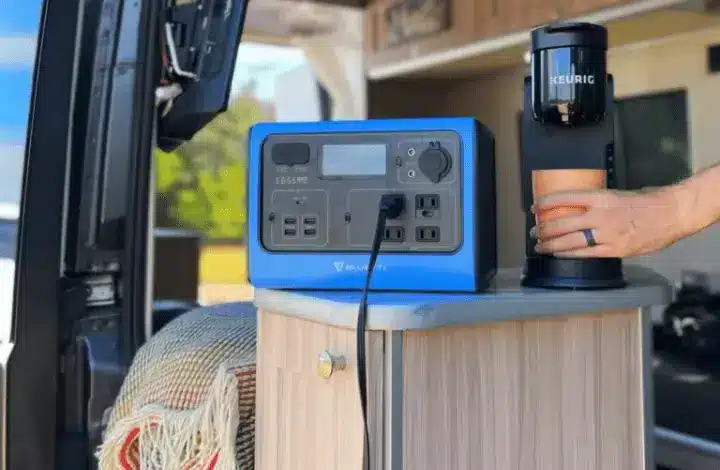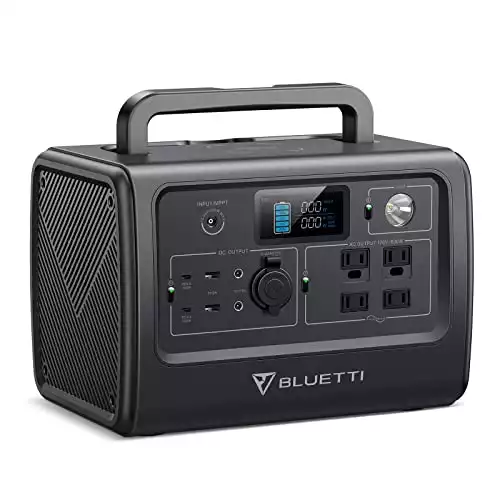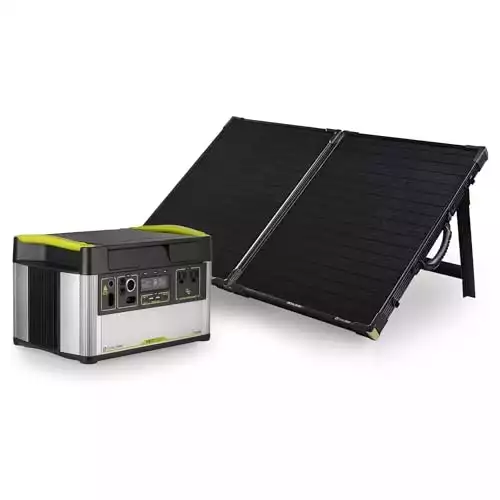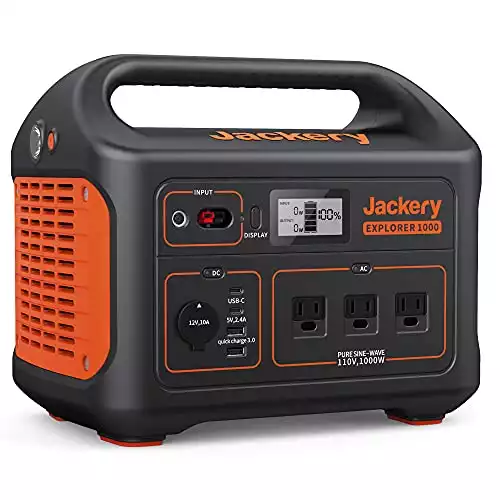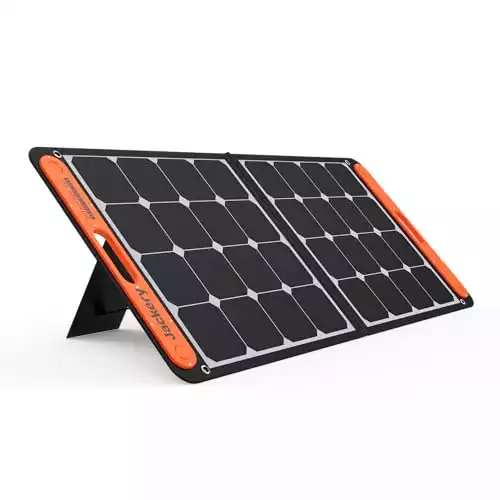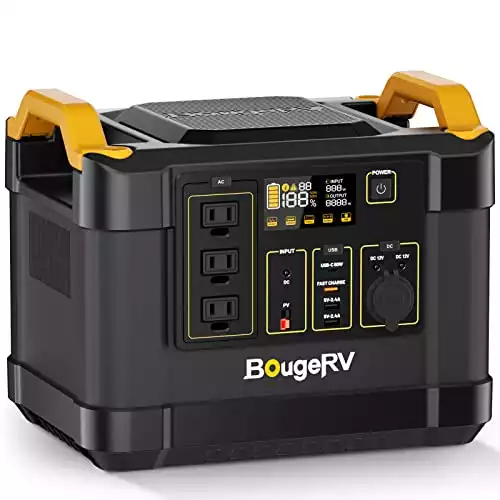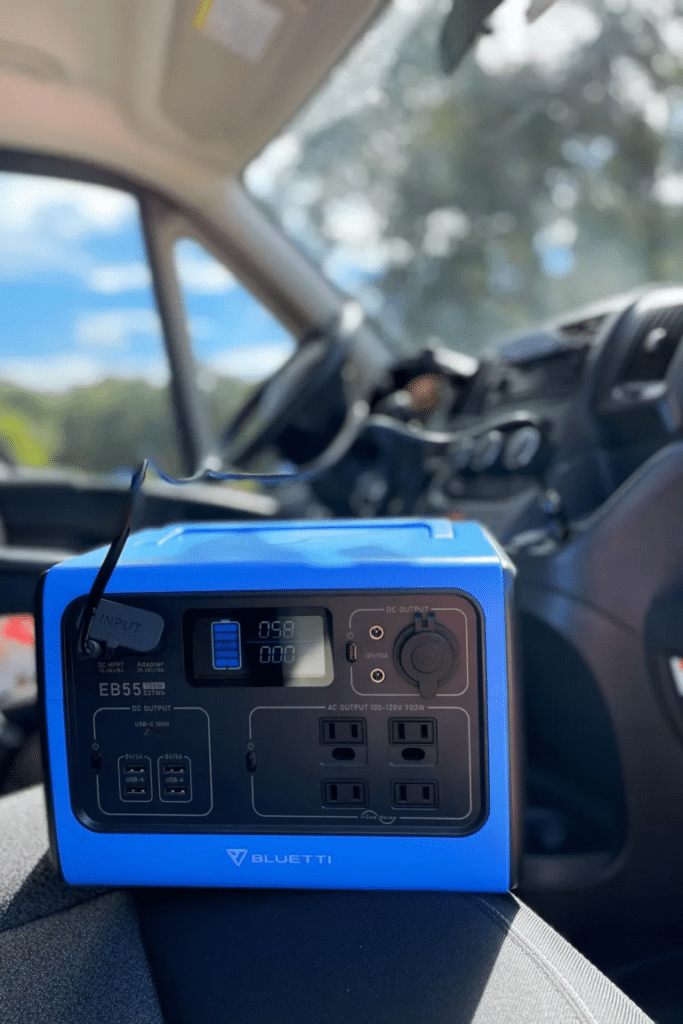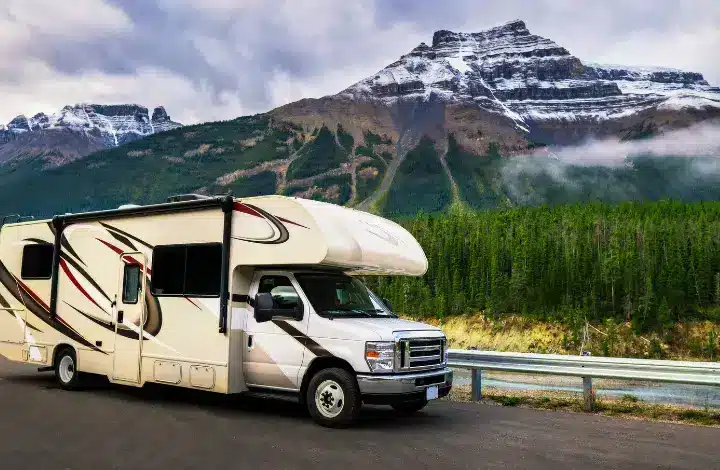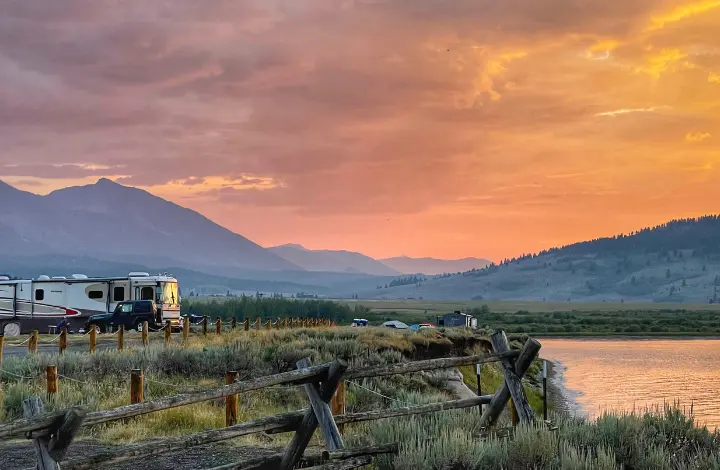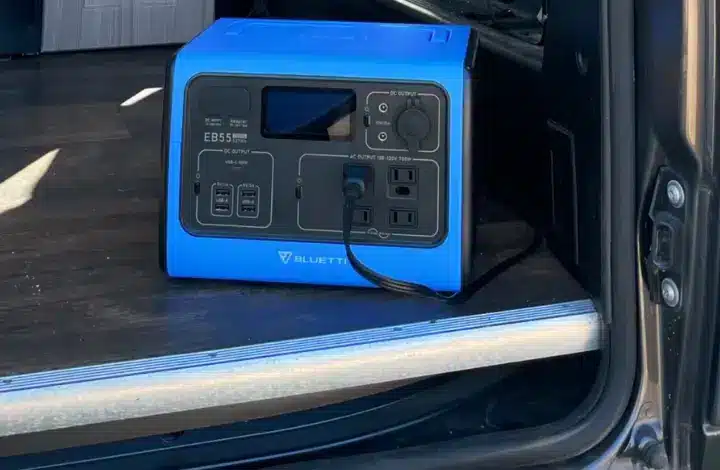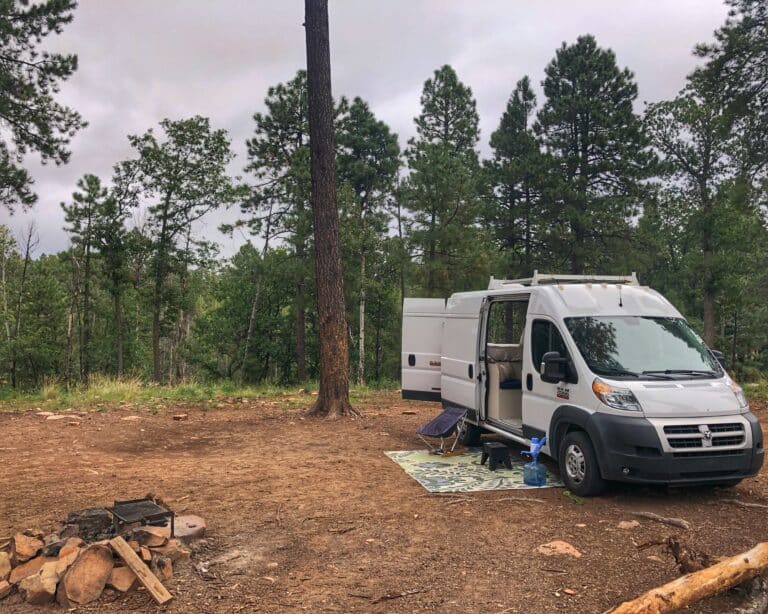5 of the Best Solar Generators for Off-Grid Living
Whether you live in a sticks-and-bricks house, spend weekends in your RV, or are building out a campervan, a solar generator could be a good investment.
If you’re a house-dweller you might want one for peace of mind when the power goes out. If you’re RVing off-grid, one of these little portable power stations might be your only way to have any juice at all.
There are so many uses for these powerful packs. Whatever your need is, we hope this article helps you learn a bit more about solar generators and how to choose the right one for you and your situation.
What is a Solar Generator?
Well, it’s not really a generator at all. You’ll commonly see solar generators also called portable power stations. In my opinion, that’s a much better name for what they do.
They’re really just portable power stations that can be charged with an outlet plug until you choose to charge them with solar energy. Once you’re in a position (the right location and enough time) to charge the power station with solar, that’s when they technically become a solar generator.
Related Reading: RV Inverter Generators
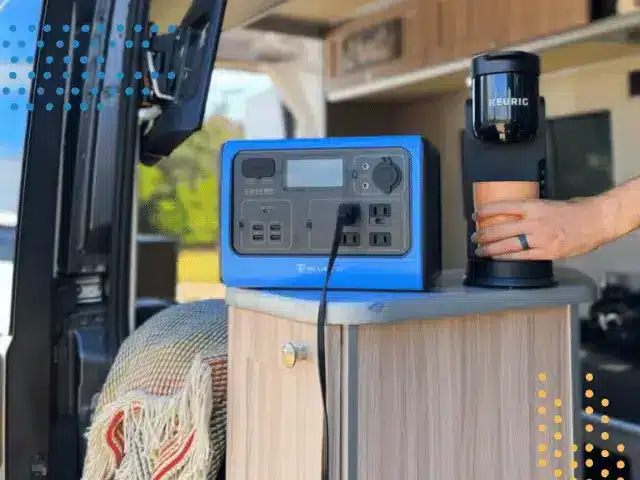
Components of a Solar Generator
The main components of a solar generator include the following:
- Power station
- Solar Panels
- Battery
First, solar panels are necessary to collect solar energy. After that, the portable power station stores the energy in its battery.
Then, the inverter inside the portable power station converts the electricity into AC power for our consumption. It’s really the combination of this whole system that constitutes a solar generator.
For the purposes of this article, we’ll explore the portable power station component options, which is generally what most people mean when they refer to a solar generator.
You can buy any of these power stations as a bundle with compatible solar panels, or incorporate it into your existing solar panel setup. Let’s dive into the details.
Related Reading: What You Should Know About Boondocking
What to Look for in a Solar Generator
Following are the main generator specifications (specs) you want to consider when purchasing a solar generator:
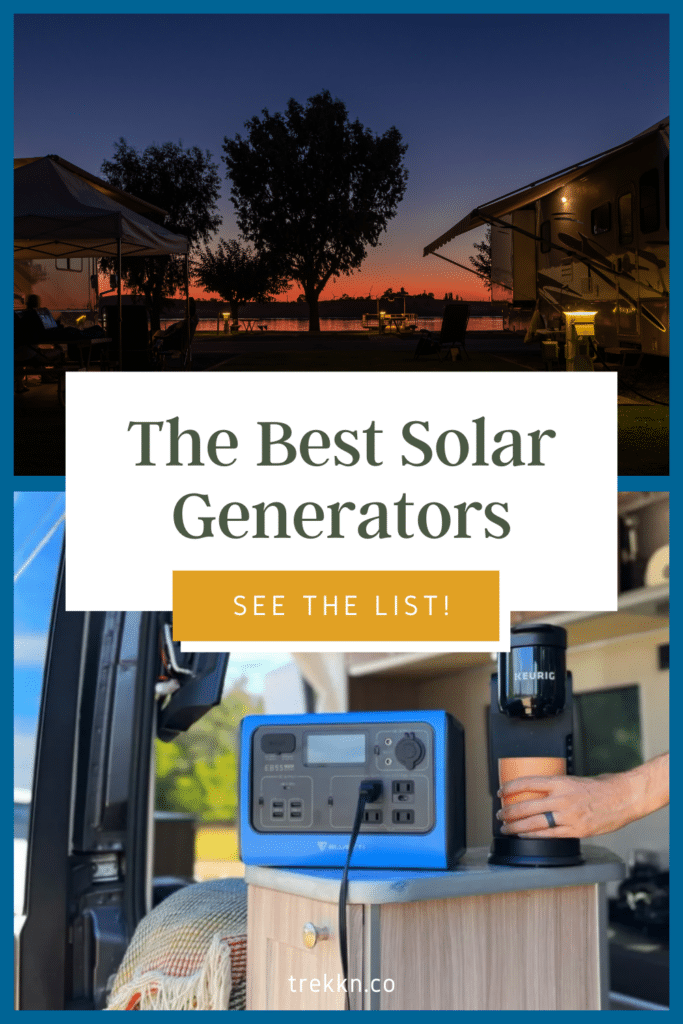
What Size Solar Generator Do I Need?
What size solar generator you need will depend on your power usage. Most portable solar generators range from 200Wh to 2000Wh. For the sake of comparison, we’ll be looking closely at generators that are all around 1000Wh, right in the mid-range.
When we had our campervan as a weekend escape vehicle, we had a Goal Zero Yeti 500x (500Wh). This Yeti power station is perfect for camping, overlanding, and short-term adventures in the campervan.
We could run lights, fans, and charge our phones endlessly, and we could power larger devices like our laptops sparingly.
But if you have an RV fridge or some cooking appliances, you’re starting to get into the 1000Wh zone.
So when considering the best solar generator for off-grid living, I think it’s fair to start with the 1000Wh power stations.
Let’s take a look at some of the top picks.
Best Solar Generators for Your Outdoor Adventures
Here are several solar generators that I would seriously consider for my own outdoor living situations.
BLUETTI PORTABLE POWER STATION EB70S
Battery Capacity: 716Wh
Battery Type: LiFePO4
Power Output: 800w continuous, 1400w peak surge
Max Solar Input: 200w
Inverter type: Pure sine wave
Weight: 21 pounds
# of Life Cycles: 2,500
Warranty: 2 years
The Bluetti Portable Power Stations are a good, long-lasting option, especially for the price. I love that they offer 2500 life cycles and a 2-year warranty for such a reasonable price.
They are definitely lightweight and mobile. But with a limited solar input and a low power output surge, these may be what I’d choose for extended camping trips rather than full-time off-grid living.
Bluetti does also have its “AC” line with the Bluetti AC200 and AC300 which are 2,000Wh and 3,000Wh respectively. Obviously, the price is considerably higher, so be prepared for that.
These models were too far out of the 1000Wh range I tried to stick to here so that it would be an apples-to-apples comparison between the different products.
Related Reading: TREKKN Review: Bluetti Portable Power Station
GOAL ZERO YETI LITHIUM 1000X SOLAR KIT
Battery Capacity: 983Wh
Battery Type: Li-ion NMC
Power Output: 1500w continuous, 3000w peak surge
Max Solar Input: 600w
Inverter type: Pure sine wave
Weight: 36 pounds
Case Material: metallic
# of Life Cycles: 500
Warranty: 2 years
Includes solar panel briefcase.
The Goal Zero Yeti series were some of the first portable power stations on the market. The GZ Yeti 1000x is more expensive than any other similar-capacity device on this list, but it boasts the highest power output by far.
A 3000w surge allows you to power laptops, cameras, fridges, grills, and TVs. It can run a 30” LCD monitor and mini PC for 10-14 hours. It’s a powerful solar generator, in fact the most powerful on this list.
It’s considerably heavier than others on this list, but that’s largely due to the metallic case, which protects against bumps and punctures. Totally worth the weight in my opinion for this better build quality.
Plus, it can fully recharge in only two hours. Who wants to wait around for a charge-up?
JACKERY EXPLORER 1000 PORTABLE POWER STATION
Battery Capacity: 1002Wh
Battery Type: Li-ion NMC
Power Output: 1000w continuous, 2000w peak surge
Max Solar Input: 126w
Inverter type: Pure sine wave
Weight: 22 pounds
Case Material: Plastic
# of Life Cycles: 500
Warranty: 1 year
The plastic case is good for weight, but not great for durability. This unit would be best if installed in a fixed location (say, in a campervan build-out), rather than carted around for weekender camping.
You should also notice that the warranty is only 1 year instead of 2 years as we have seen with the previous options.
Jackery makes portable solar panels that are easy to use with this power station, and they recommend a setup of two 100-watt panels to charge this generator.
With good solar conditions, two 100-watt panels will recharge the Jackery Explorer 1000 in eight hours. This is obviously a bit slow compared to other units.
Compatible with Jackery Explorer 240/300/500/1000/1500 power stations.
- Foldable US solar cell panel
- USB Outputs
- Does not charge Explorer 440 or PowerPro
EF ECOFLOW DELTA 2 PORTABLE POWER STATION
Battery Capacity: 1024Wh
Battery Type: LFP Battery(LiFePO4)
Power Output: 1800w continuous, 2700w peak surge
Max Solar Input: 500w
Inverter type: Pure sine wave
Weight: 27 pounds
# of Life Cycles: 3,000
Warranty: 5 years
The Ecoflow Delta 2 has a claim to fame due to its fast charging. Specifically, it claims to charge seven times faster than the competition. This unit can go from 0-80% charged in 50 minutes when plugged in with AC input, and to 100% charged in 80 minutes.
It can even recharge with solar in as little as three hours. Now that is impressive!
These portable solar generators are built to last longer as well, with a 5-year warranty and 3,000 life cycles. If you’re planning to use a portable power station for full-time off-grid living, I think this is the one.
For weekender camping, the longevity might not matter as much, but for living off-grid you want something like this that will be with you for the long haul.
BOUGERV FORT 1000 1120Wh LIFEPO4
Battery Capacity: 1120 Wh
Battery Type: LiFePO4
Power Output: 1200w continuous, 2000w peak surge
Max Solar Input: 200w
Inverter type: Pure sine wave
Weight: 28.7 pounds
Case Material: Aluminum
# of Life Cycles: 3500
Warranty: 7 years (5 years plus 2 additional years if purchased directly from Bouge RV website)
- Aluminum shell batter pack
- 1200 Wh, 110 Volts
- 29 pounds
Bouge RV makes a solar panel (sold separately) that works with this power station. It takes only 4.5 – 5.5 hours to fully recharge the power station with solar in the wild. For comparison, it takes 4.5 hours to recharge if plugged into a wall outlet.
The premium aluminum case is excellent for heat dissipation and keeping noise production low. It’s quiet so you can sleep soundly at night if you’re using the Fort 1000 in a small space.
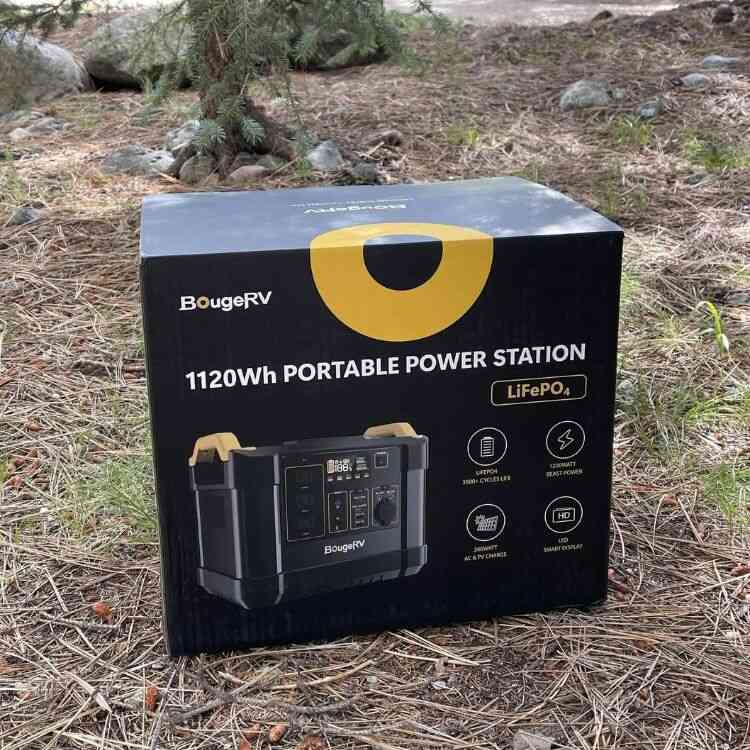
Bouge RV really backs its product with a generous 5-year warranty. Plus, you can get an extra 2 years for a 7-year total warranty if you purchase your power station directly from Bouge RV.
In all, if you don’t need a power station that is ultra-fast at charging, the Bouge RV Fort 1000 Portable Power Station may be the best choice for you.
The Eco Flow has it beat in speed of charge, but in all other areas, the Bouge RV Fort 1000 is tops. It has the most life cycles (meaning your battery will last longer!) and the longest warranty. It’s on the heavier side of all the units discussed here, but we think the weight is worth it for such a powerful, long-lasting power station.
Related Reading: TREKKN Review: BougeRV LiFePO4

Is a Solar Generator Right For You?
If you need some portable power for your off-grid living setup or even just for short camping trips, a solar generator is a great solution.
You could opt for a generator that runs on fuel instead, but those are noisy, stinky, and non-renewable. A generator that runs on solar power is clean, quiet, and renewable.
Purchase Solar Panels with Power Station
But don’t forget that in addition to the cost of the portable power station, you also need to purchase solar panels in order to have a full solar generation station.
I believe solar generators are worth the money and that off-grid solar systems are definitely the way to go.
If you’re just starting out with off-grid adventures and you’re unsure if it’s right for you, you could try a fuel-powered generator to see if you like being off-grid. This is the safe bet before you commit to the more expensive full solar generator setup.
Related Reading: Top RV Generators (Fuel, Propane, Dual-Fuel)
Which Solar Generator is Best for Off-Grid Living?
The answer to this question may be different for every person. What is right for you certainly depends on your specific power needs and how you intend to use the generator.
But if I had to pick just one for overall off-grid living, with enough power to live a somewhat normal life, and to have a product that will last under lots of use, I’d choose the EF ECOFLOW DELTA 2 Portable Power Station.
Whatever you choose, don’t forget to simply enjoy the wonders of nature as you get out and explore!
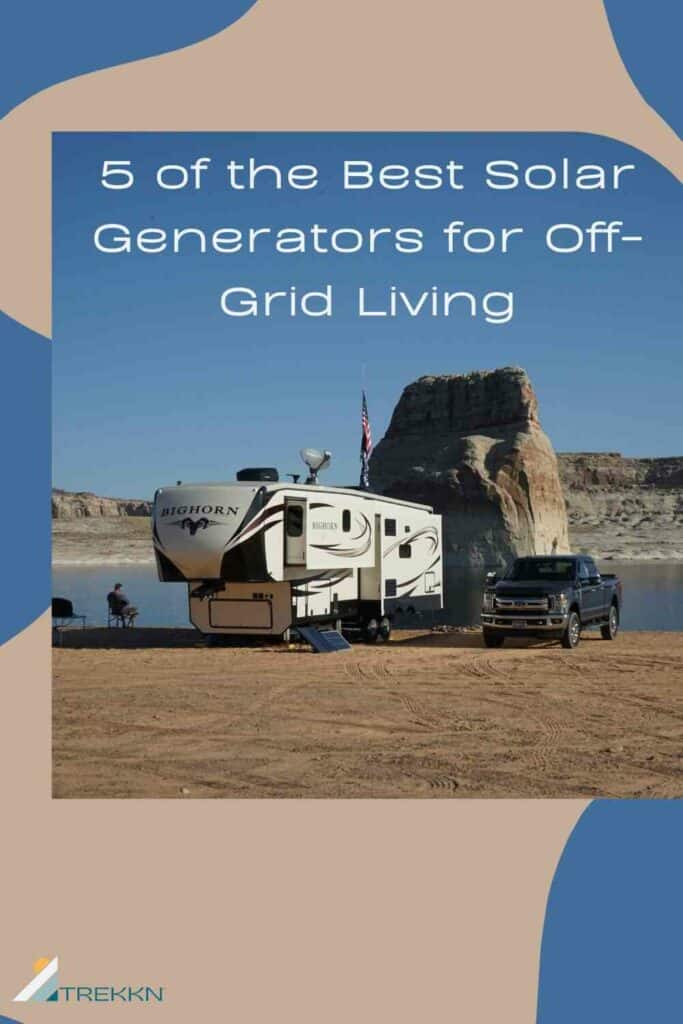

Kristen Bates lives & works from her RV, primarily boondocking off-grid. She owns and operates a women-led travel company, Legit Trips. Kristen loves to explore new places and inspire others to do the same. If she’s not typing away on her laptop, she’s off on an adventure- hiking, biking, or SUP boarding. You can follow her RV adventures @PerpetualMoves and learn more about her travel company at LegitTrips.com.


